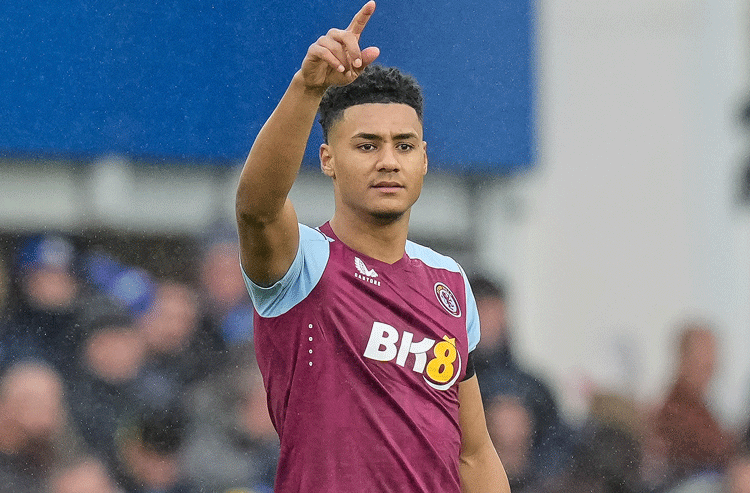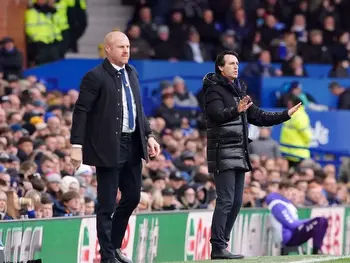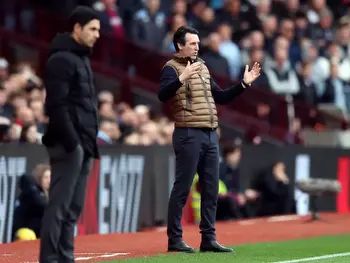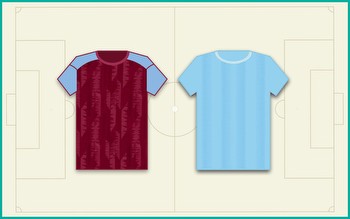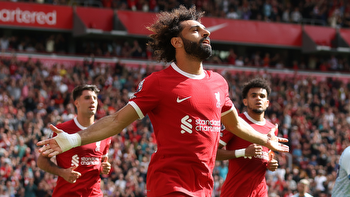How Unai Emery turned Ollie Watkins into the Premier League’s second-best striker

Unai Emery raised his right index finger to his temple and screamed relentlessly for calm.
For once, his message did not cut through to Aston Villa’s players. It was a futile exercise, at odds with the chaos taking place on the pitch in west London.
The game had boiled over and red cards were dished out to both Villa and Brentford. The second, brandished to Boubacar Kamara for pushing Yehor Yarmoliuk’s face, happened only yards away from Emery, who was already on the pitch attempting to defuse the situation between his goalkeeper Emiliano Martinez and Neal Maupay, both accustomed to playing the pantomime villain.
The composure Emery preaches — and the one Villa tend to display at home — was exchanged for scrapes and an abandonment of any technical guile.
Ollie Watkins, Villa’s eventual match-winner, made a beeline for the tunnel at full time, in no mood to celebrate the 2-1 victory. He had scored his 21st Premier League goal in 2023 — no player has registered more for Villa in a calendar year — but he briefly stood, agitated, with Thomas Frank and pointing towards the stand behind one of the goals.
Frank had intercepted his former player and asked what caused such provocation and shift in his character. The pair are still on texting terms and Frank, perhaps, was the only person who could have got Watkins to stop on his way to the changing rooms.
The 27-year-old’s demeanour was out of character. Those who know him say he is a typically reserved and quiet individual, diligent in his work and boasts a level-headed temperament. Yet here, against his former club, he was enraged, running into the net after scoring and furiously pointing at a Brentford supporter in the crowd who had been abusing a family member of his.
The goal itself — and Watkins again proving the difference-maker — was clouded in the aftermath, with the optics of a fraught final quarter of an hour the overarching talking point.
But this was another Villa win in which Watkins scored the decisive goal — the fourth time this season, a Premier League-high — and another match away from home in which his newfound ruthlessness lifted his side from a period of drift.
It was Watkins’ 49th Premier League goal, with only two other Villa players — Gabriel Agbonlahor (74) and Dwight Yorke (60) — passing the half-century mark. Watkins is now a bona fide scorer, transformed under Emery and with a robust claim to be the second-best No 9 in the league, behind Erling Haaland.
In isolation, Watkins’ header at Brentford was one of his most simple finishes but smacked of instinct and the type of goal Emery wants from his focal point up top. When the 52-year-old arrived, he held team and individual meetings with players. With Watkins, Emery outlined the runs he expects his centre forward to make, using video analysis to explain his principles before putting them into practice during and after training, working alongside Villa’s individual coach, Antonio Rodriguez Saravia, known as “Rodri.”
“I work with Rodri every day, doing extras out on the training field,” said Watkins. “Sometimes we don’t even do finishing practice. We may just watch videos and analysis. He is the key for me and credit to him because he helps me so much. I will watch games back and see what I could have done better, what I did well and just keep going again.”
Emery asked Watkins, who previously played out wide at Brentford and was still prone to drifting into channels at Villa, to remain within the width of the box. The England international was keen for greater responsibility and recognised that if he was going to become a consistent goalscorer who could produce meaningful numbers, he had to concentrate specifically on his effectiveness inside the box. He watches clips of two former strikers Emery coached, Carlos Bacca and Edinson Cavani, for inspiration.
Watkins is considered one of Villa’s most conscientious and hardest trainers, described to The Athletic by a source close to the dressing room, who spoke on the condition of anonymity to protect their position, as “working relentlessly with staff to get to these levels”. Privately, though, there remains anticipation of the forward still possessing scope for further development. His nine goals this season have come from an expected goals (xG) total of 10.
Watkins was recalled to the England set-up in October, 18 months after his previous appearance. It served as vindication for his evolution under Emery and for delivering goalscoring numbers over a sustained period, indicating such upturn was a sign of profound improvement.
Since November 2022, Emery’s first game in charge, only Haaland (32) and Mohamed Salah (26) have scored more Premier League goals than Watkins (22). In that time, Watkins ranks in the top nine per cent of forwards from Europe’s top five leagues for goal-creating actions.
And Villa’s record-breaking achievement of winning 15 straight league home games was spearheaded by the player leading the attack. Emery has never had a goalless draw in 93 Premier League fixtures as a Premier League manager, and Watkins has been directly involved in 15 of the previous 17 goals at Villa Park, scoring 11 and assisting four.
“He’s amazing”, said Emery. “He’s always doing his work and when he’s scoring, he’s adding his best quality to our squad. He’s always very competitive, adapting in each game and what we need at each moment. He was holding the ball up very well at Brentford. He’s doing great work.”
Watkins’ cutting edge has sharpened under Emery. It is a remarkable change, considering previous criticism of his play had been centred on the idea that he was too blunt in attacking situations and Villa were therefore in need of an upgrade. It’s easy to forget that before Emery doubled down on building his offensive structure around Watkins, Danny Ings was Villa’s top scorer at the start of 2023 with seven goals.
GO DEEPER
Ings was long coveted by Moyes but the striker's West Ham move simply has not worked
“Ollie is always ready to work and to give the team what they need,” said captain John McGinn. “Individually as well, he is always doing his work: scoring goals and defensively in the first press. It’s very important for us. Even when he is not scoring, when he is not being brilliant (in front of goal), he is doing his work. For me and his team-mates, it’s always positive.”
In more nuanced terms, Watkins’ role in Emery’s build-up and off-the-ball pressing is critical. It is why, even if goals do eventually run dry, Emery has explained the broader importance of his forward in the functioning of the team. It’s why Emery had pushed strongly for Watkins to sign a new contract in October.
Watkins’ propensity to make constant elastic-type runs against opposing defences — stretching the play before contracting it by dropping deep and receiving the ball to feet — works in tandem with the two No 10s Emery typically deploys off Watkins’ shoulders in possession.
“I work on my relationships with centre-backs and midfielders and what to do when they get the ball,” Watkins said. “I do that whether I have played well or badly. I do it every time.”
One more league goal and Watkins will have reached double figures in his first four campaigns at Villa. Peter Withe was the last player to score 10 or more goals in four successive top-flight campaigns for the club, between 1980 and 1985. Even better: Watkins will be the first Englishman to score at least 10 goals in his first four Premier League seasons since Robbie Fowler in 1997.
His statistics shine brightly right now, but Watkins’ efforts in turning himself into one of the Premier League’s best, most consistent goalscorers is a product of hard work and several behind-the-scenes intangibles.
(Top photo by Michael Steele/Getty Images)








